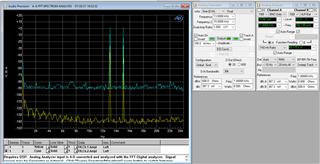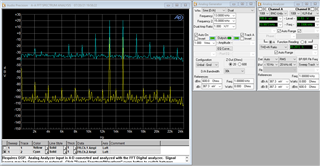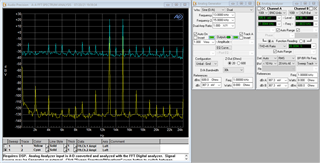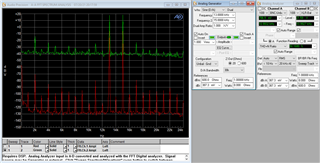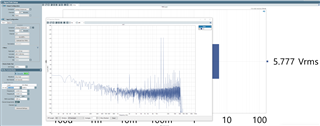
Hello,
I have TPA3255 circuit that is giving me pretty high IMD when I feed in 13kHz + 15kHz dual tone signal.
The strange thing is that when measured differentially across TPA_INPUT_A / TPA_INPUT_B, the spectrum looks pretty good:

When I measure at INPUT_A / INPUT_B nets (on the TPA3255 side of the AC-coupling caps), the spectrum is showing significant IMD distortion tones:

Now, I realize X7R as shown on the schematic snippet aren't ideal dielectric type.. the screenshot above shows the result after replacing X7R with 10000pF /C0G type. Since that didn't resolve the issue, I went ahead and air-wired in 6.8uF film caps in place of the 10000pF ceramic caps, but that didn't change the result at all.
Is there something inherent to the TPA3255 input that would cause these IMD products to appear?
Does anyone have any other ideas about why this is happening and how to resolve it?
Thanks!




